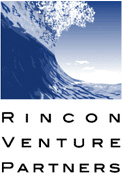The fool doth think he is wise, but the wise man knows himself to be a fool.
Shakespeare, "As You Like It", Act 5 scene 1
In Mark Twain's masterpieces, "The Adventures of Tom Sawyer" and "The Adventures of Huckleberry Finn", Huck is portrayed as a ‘fool', whereas Tom is considered ‘wise'. In actuality, Tom's actions are like many unsuccessful entrepreneurs, who are too clever by a half. In contrast, Huck is clearly a ‘wise fool' who very definitely sees the word from The Fringe.
Chess vs. Checkers
If you are not on The Fringe, you might believe that Chess is the ideal game for practicing the strategy and planning required to succeed in business. Successful chess players are methodical, contemplative and plan their strategy several moves in advance. This may be the a great approach for a scientist, but seldom will it payoff for a real-world entrepreneur.
Checkers is much more akin to the fast paced world of an entrepreneur. It is less cerebral than chess, but still allows players to reasonably plan their strategy a couple of moves in advance. In addition, checkers is more straightforward, as each game piece (with the exception of a "Crown" that can move both forward and backward) has the same capabilities.
Huck Played Checkers, Tom Played Chess, Neither Read Shakespeare
In "Huckleberry Finn", Tom makes the mistake that many chess players and overly analytical entrepreneurs also make. In Chapter 35, Tom laments to Huck at length regarding how "difficult it is to get up a difficult plan".
"Blame it, this whole thing is just as easy and awkward as it can be. And so it makes it so rotten difficult to get up a difficult plan. There ain't no watch- man to be drugged -- now there OUGHT to be a watch- man. There ain't even a dog to give a sleeping-mix- ture to. And there's Jim chained by one leg, with a ten-foot chain, to the leg of his bed: why, all you got to do is to lift up the bedstead and slip off the chain.
Why, drat it, Huck, it's the stupidest arrangement I ever see. You got to invent ALL the difficulties. Well, we can't help it; we got to do the best we can with the materials we've got. Anyhow, there's one thing -- there's more honor in getting him out through a lot of difficulties and dangers, where there warn't one of them furnished to you by the people who it was their duty to furnish them, and you had to contrive them all out of your own head."
In his attempt to develop a plan to free their friend Jim, who is a runaway slave, Tom decides to dig a tunnel under the unguarded cabin, enter through the floorboards, saw the metal bedpost in half in order to remove Jim's shackles and then exit out a window using a rope ladder made from bed sheets. This may seem like a clever plot until you consider that the window was only a few feet off the ground and the front door was readily accessible.
Once inside the cabin, Jim was understandably anxious to flee. However, Tom first required Jim to write some profoundly bathos graffiti in his cell. When it was determined that the log walls would not make a suitable canvas, Tom required Jim to find an appropriate rock. Tom further complicated the escape plan by insisting that Jim first create an appropriately dramatic coat of arms, using Jim's blood as ink, before finally escaping from the cabin.
To add even more drama to Jim's escape, Tom nailed several notes, written again in blood, to the front door of the family holding Jim captive in the days leading up to Jim's emancipation. These anonymous notes warned of a band of ruffians who intended to raid the farm and capture Jim, in order to collect the reward money. Not only did this enhance the drama quotient of the adventure, it also ensured that those holding Jim would be highly vigilant, thereby reducing the likelihood that the escape plan would succeed.
Much to Tom's chagrin, Huck dutifully listens to Tom's plan and then suggests that they enter through the cabin's front door, disconnect Jim's shackle from the bed by lifting the bedpost and sliding the chain out from under it and then depart with Jim via the front door.
Huck might not have been much of a chess player, but he probably could beat Tom in a hardy game of checkers. Running a business is not a chess match, it is not even as complicated as Chinese checkers. Executing a successful business plan relies far more on down-to-earth common sense than it does to high-minded strategic planning. There is ‘honor' in creating a self-sustaining adVenture. Dishonor awaits those who insist on ‘contriving' their own ‘difficulties and dangers'. Despite this reality, Tom’s forceful personality overruled Huck’s common sense and the boys executed his convoluted and nonsensical plan.
Write a Huck Plan
When you create an execution or an action plan, whether it is a Business Plan, a Product Launch Plan or a Product Development Plan, think like Huck, not like Tom.
Business is too dynamic and unpredictable for you to attempt to play four chess moves ahead of your competitors, market forces and other exogenous factors. You will simply waste your time and invoke a false sense of security if you attempt to do so.
One startup team that I worked with loved to wile away the hours trying to anticipate competitor moves, partner reactions, etc. The land of conjecture was well trod in every Executive meeting with little to show for it. The team jumped from one cabal to another, constantly building upon a false, smug belief that they were indeed the smartest group of guys in the market. They often even outsmarted their own customers, who did not know what they really wanted.
A Huck Plan should embody the following characteristics:
Short and Simple - Take more time and write less. If you force yourself to keep your plans simple, your plans will naturally be more concise. Do not waste time introducing excessive conjecture into your plan. Do enough research to gain clarity, but do not attempt to reach certainty. Anticipate your moves into the relatively known future and maintain the necessary flexibility to change course, as you acquire new data.
Ideally, your Mom (assuming she is not a PhD) should be able to understand your Plan. If you do not want to run it by your Mom (or if she is a PhD), be sure that your Plan is understood up and down the ranks of the employees who will execute it. If this sounds obvious to you, good. It means you are solidly on The Fringe and would never consider writing a Plan that could not be readily understood - unfortunately, this seemingly obvious sentiment is often obscure, especially in the halls of BDC's.
Let Common Sense Be Your Guide - You are no longer in college. Do not write a whitepaper so divorced from reality that it would be worthy of a Professor's praise. You can now write and think in common sense terms and not be penalized. Do not consult your business textbooks when creating a Plan. Your goal is to write a concise Plan that is meaningful to your business, not a document that follows the template outlined in a textbook.
Keep It To Yourself - Tom was compelled to proclaim his intentions with the bloody notes, even though it made the escape more difficult. In fact, it caused the local farmers to band together and guard the perimeter of the farm. When Tom and Huck freed Jim, Tom was shot by one of the farmers as they made their escape. He could of avoided this injury (to his ego and his backside) if he had listened to Huck and carried out a common sense plan.
As noted in Competing from the Fringe, do not telegraph your strategic intentions in the press. Resist the temptation to discuss what you plan to do when you are speaking in a public forum. You must assume that everything you say will be read by someone who is in a position to thwart your efforts.
Milestone Driven - To ensure that your Plan is grounded in reality, specifically articulate the key milestones to be achieved. In Huck's Plan to free Jim, his milestones would be:
- Enter cabin through front door, undetected
- Remove Jim's shackles by lifting up the bed
- Exit cabin through the front door with Jim, undetected
Once the larger tasks are broken into simple, straight-forward milestones, you can create a few detailed bullet points articulating the tactics involved in accomplishing each one.
If someone on your team mentions PERT Charts, Product Wheels, GANT Charts, or the like, congratulate them on their knowledge of project management jargon and then direct them to a good Headhunter with ties to BDC's. At the early stages of your adVenture, such tools have too much overhead to warrant their usage. A piece of paper, a pen with lots of ink and a bullet point approach should be an adequate arsenal for your startup's planning needs.
If you are concerned that your planning process is bogged down in conjecture and minutia, err on the side of keeping your Plan simple. However, do not let the loudest, most passionate voice rule the day. As noted in Ready, Fire, Aim, under-planning can be as detrimental to your long-term success as over-planning.
When in doubt, ask yourself, “What would Tom do?” If Tom would be disappointed that your Plan does not have enough ‘difficulty and danger’, then you likely have hit upon a Plan from The Fringe – a Plan that Huck Finn would be proud to call his own.
Plans Best Laid
Exercise: Answer the following questions as if you were being interviewed by a writer from Fortune Magazine. This is a great opportunity for you to think through the challenges your business will face and how you might address them on a macro level. It is also just plain fun to fantasize about your success, something you should not hesitate to do often and with unabashed relish.
The scenario is that you are the Founder of a successful venture. You moved on to other interests while the venture was doing well and the venture subsequently foundered. You have just announced your plans to return to the helm of the organization and now every major business publication in US wants to tell its readers how you plan to right the ship.
Interviewer's Questions:
o What three decisions did you make early on that proved vital to your success?
o How did you address the three most significant threats to your business?
o Despite your phenomenal initial success, mistakes were made. What do you view as the most significant mistake and what did you do to rectify it?
o It must have been nerve-wracking to start a business. What risks did you identify at the outset and what did you do to mitigate them?
o How did you establish and maintain your leadership position in the market?
o What happened? It seemed you were on top of the world when everything apparently fell apart.
o Knowing what you now know, what would you have done differently?
o I understand that you are again fully engaged in the business, what do you plan to do to turn the business around?




Pingback: Hold em or Fold em | infoChachkie
Pingback: Quora
Pingback: Quora
Pingback: Quora